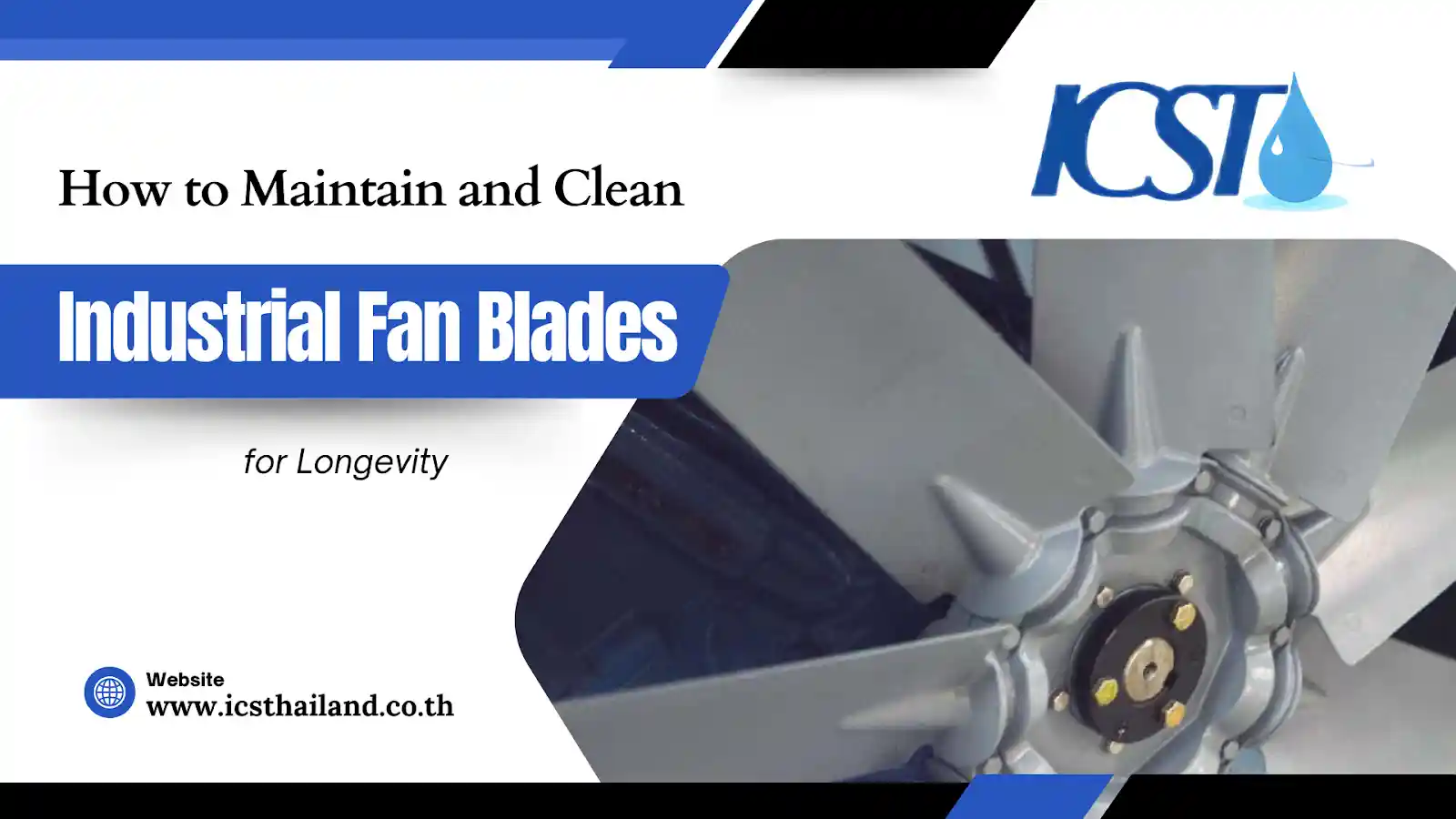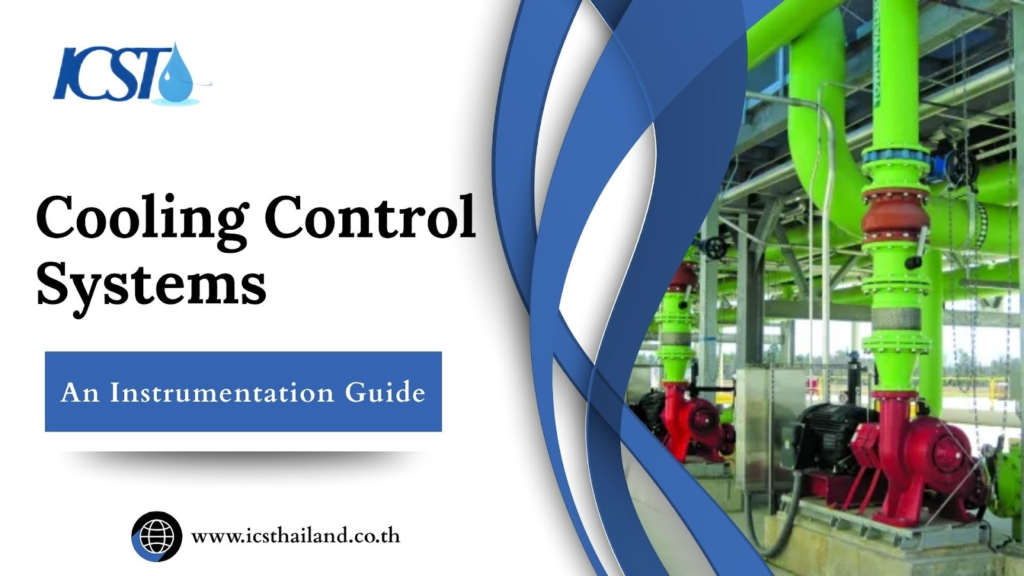Industrial fans play a vital role in a wide range of industrial and commercial settings. They help regulate airflow, manage temperatures, and improve air quality to create a safe and efficient environment.
Have you ever considered the true cost of neglecting these essential assets? Poorly maintained fans quickly become inefficient. This results in increased energy costs and early equipment breakdown. Such issues can cause expensive repairs, significant operational downtime, and even safety hazards from vibrations or blade failures.
This comprehensive guide will cover everything you need to know about maintaining and cleaning industrial fan blades, including why it’s important, a step-by-step cleaning process, and essential maintenance practices. Whether you’re an industrial facility manager or a maintenance technician, this guide is designed to give you expert, actionable insights.
Table of Contents
ToggleWhy Maintenance Matters for Industrial Fan Blades
Neglecting regular maintenance of industrial fan blades can have severe consequences for your facility and its operations. Here’s why it’s crucial to keep fan blades in top condition:
- Reduced Efficiency: Accumulated grime on the blades disrupts airflow and forces the fan to work harder, increasing energy consumption.
- Premature Wear and Tear: Dirt, debris, and imbalanced fan blades can lead to faster deterioration of components, resulting in costly repairs or replacements.
- Operational Downtime: Malfunctioning fans can halt operations, leading to production delays and reduced productivity.
- Safety Risks: Worn or imbalanced fan blades can lead to excessive vibrations, which may cause structural damage or blade failure, posing hazards to personnel and equipment.
Why is this so important for your business? Because consistent maintenance enhances safety and reliability. It helps mitigate catastrophic failures by catching issues early, reducing vibration, and controlling noise. Furthermore, many industry regulations and internal standards often mandate regular equipment maintenance.
Understanding Your Industrial Fan Blades: Types & Characteristics
To effectively maintain industrial fan blades, you must first understand their design and materials. Industrial fan blades are typically crafted from durable materials for optimal airflow and efficiency.
Common Blade Materials:
- Steel (Carbon, Stainless): Ideal for heavy-duty applications, durable, and withstands high stress.
- Aluminum: Durable, resistant to corrosion, and ideal for settings with moderate workload demands.
- Fiberglass/Composites: Chemical-resistant and designed for specific applications requiring minimal weight and high durability.
Common Fan Blade Types:
Industrial fan blades can be classified into these categories:
- Axial Flow Blades: Includes propeller, tubeaxial, and vaneaxial fans. Primarily used for moving large volumes of air at low to medium pressure.
- Centrifugal Blades: Includes backward-inclined, forward-curved, and radial blades. Used for high-pressure applications and moving denser air.
Why Blade Type Matters:
Different blade designs and materials require specific cleaning agents and maintenance techniques ( not just conventional cleaning solutions ). For example, composite blades may be damaged by abrasive cleaners, while steel blades need careful rust prevention.
Understanding your fan’s material and design is essential for selecting the right maintenance strategies.
Pre-Maintenance Checklist
Preparation is the key to safe and effective maintenance. Here’s what you need to do before starting: Gather all necessary tools and equipment, review the maintenance guidelines carefully, and ensure the work area is clean and free of hazards. Taking these steps will help prevent accidents and ensure the job is done right.
1. Lockout/Tagout (LOTO):
It physically prevents accidental startup, protecting personnel from severe injury or even fatality.
2. Personal Protective Equipment (PPE):
What personal protective equipment (PPE) should you prepare?
- Safety glasses or goggles
- Cut-resistant and chemical-resistant gloves
- Dust mask or respirator
- Hard hat for overhead work
- Safety footwear
- Hearing protection (if noise levels exceed safe limits)
3. Gathering Tools & Materials:
Next, gather all your tools and materials. This includes appropriate cleaning agents like degreasers or solvents; always ensure they are compatible with the blade material.:
- Cleaning agents (mild detergent, degreasers, solvents)
- Brushes (soft, stiff, or wire, depending on the blade material)
- Scrapers (plastic or metal)
- Industrial vacuum cleaner (wet/dry)
- Rags or microfiber cloths
- Inspection lights or borescopes
- Torque wrench, screwdrivers, and other hand tools
- Balancing kit (if required)
- Proper lubricants (for fan bearings)
4. Site Preparation:
Finally, prepare your worksite. Ensure adequate lighting and ventilation. Ensure the area around the fan is clear and free from any obstructions. Before you begin cleaning, don’t forget the fan motor inspection for signs of wear, overheating, or unusual noises. Check that the retention cable is securely attached to the building structure.
Step-by-Step Guide to Cleaning Industrial Fan Blades
Effective cleaning of industrial fan blades starts with a thorough initial assessment. Begin by visually inspecting the fan and blades for any large accumulations of dust, grease, or foreign objects. Once identified, use a dry brush or an industrial vacuum cleaner to carefully remove all loose debris.
1. Initial Assessment & Debris Removal:
- Inspect the fan and blades for visible dust, grease, or foreign objects.
- Use a dry brush or an industrial vacuum to remove loose debris before applying any cleaning agents.
2. Choosing the Right Cleaning Agent:
Selecting the right cleaning solution is essential to avoid causing any harm. For general dust and light dirt, a mild detergent mixed with water, or specialized industrial cleaners, will suffice.
If dealing with grease or oil, heavy-duty degreasers are necessary; however, always explain and perform a compatibility test on a small, inconspicuous area first.
For resin or sticky substances, carefully applied specific solvents might be needed. If corrosion or rust is present, gentle wire brushing followed by appropriate rust removers can be used, but always exercise caution to avoid damaging the blade
Pro Tip: Always test cleaning agents on a small, inconspicuous area of the blade to ensure compatibility.
3. Cleaning Process:
Now for the cleaning process itself. How should you apply the cleaning solution? Depending on the cleaner, you can spray it, wipe it on, or even soak removable parts.
- Agitate stubborn grime using brushes or scrapers.
- Allow the solution to sit (dwell time) to break down dirt effectively.
- Rinse thoroughly, ensuring no residue remains.
- Dry blades completely using a cloth or compressed air to prevent moisture-induced corrosion.
Challenge Tip: For hard-to-reach areas, use extension tools or flexible brushes.
Comprehensive Industrial Fan Blade Maintenance Practices
1. Visual Inspection
A comprehensive visual inspection is crucial for the longevity of your industrial fans. Thoroughly inspect for any signs of cracks or pitting, paying close attention to the blade root as well as the leading and trailing edges. Look for any signs of corrosion or erosion, which indicate material loss. Is there any deformation or bending?
This could signal an impact or stress issue. Finally, inspect the integrity of any blade coatings; damage here can expose the underlying material to further wear.
2. Blade Balancing:
Blade balancing is arguably the most critical aspect for smooth operation and extended fan life. But why is a perfectly balanced blade so crucial? Because even minor imbalances lead to excessive vibration, premature bearing wear, structural fatigue, and ultimately, premature failure of the fan system.
What are the signs of imbalance? You might notice excessive vibration, unusual noises, or the fan appearing to “walk” or shift its position.
3. Bearing Lubrication:
Proper lubrication involves using the correct type of grease or oil at the recommended frequency. Be careful not to over-lubricate, as this can be as damaging as under-lubrication.
Regularly checking and adjusting the alignment and tension of belts and pulleys is essential for belt-driven fans. How does misalignment impact efficiency? It causes excessive wear on belts, pulleys, and bearings, leading to energy loss and early component failure.
4. Belt & Pulley Checks:
Ensure all mounting bolts are secure. For direct-drive fans, inspect the drive shaft and coupling for wear, misalignment, and secure connections. .
5. Housing & Motor Inspection:
Lastly, don’t overlook the housing and ductwork. Confirm there are no obstructions, damage, or excessive leakage that could negatively impact airflow efficiency
Common Industrial Fan Problems & Troubleshooting
Excessive Vibration: This is a frequent complaint. What typically causes it? Imbalance in the blades, loose mounting bolts, worn bearings, misalignment of components, or even a bent shaft. The fixes include balancing the blades, securing all fasteners, replacing any damaged bearings, or precisely realigning the fan system
Reduced Airflow: If your fan isn’t moving enough air, what could be the culprit? Dirty blades are a common cause, as are obstructed intake or discharge points, or physically worn or damaged belts or blades. Sometimes, incorrect fan rotation due to wiring issues can also reduce airflow. Solutions include thorough cleaning, removing any obstructions, repairing or replacing damaged or worn blades, and checking electrical connections.
Unusual Noises (Grinding, Squealing, Rattling): Strange sounds are clear indicators of a problem. What do these noises signify? Grinding often points to worn bearings, squealing to dry or faulty bearings, and rattling to loose components or a blade rubbing against the housing.
When to Call the Professionals?
While routine essential maintenance steps can be handled internally, there are times when professional expertise is indispensable. When should you definitely call in the experts?
- Diagnosing complex issues (e.g., excessive vibration analysis).
- Carrying out blade replacements or specialized repairs.
- Performing dynamic balancing with advanced equipment.
- Addressing safety concerns like structural damage.
- Installing or commissioning new fan systems.
Professional expertise ensures comprehensive solutions for issues beyond standard essential maintenance tips.
Conclusion
The message is clear: regular maintenance and diligent cleaning are not merely operational tasks. They are a strategic investment in the health, longevity, and efficiency of your industrial fans. By prioritizing these practices, you actively contribute to significant energy efficiency, savings and reduced operational costs. What’s your next step towards maximizing your industrial fan’s lifespan? We highly encourage you to create and rigorously follow a comprehensive maintenance schedule.
Frequently Asked Questions
How do you clean industrial fan blades?
Clear away any loose dirt or debris using a vacuum or a dry brush. Then, use a cleaning agent (mild detergent for dust, degreaser for grease) compatible with the blade material.
What is the maintenance of an industrial fan?
Industrial fan maintenance involves regular cleaning of blades and housing, comprehensive visual inspections for cracks, corrosion, and loose fasteners, and crucial blade balancing to prevent vibration.
How to make fan blades dust-proof?
You cannot make fan blades 100% dust-proof. However, you can apply appropriate protective coatings or finishes that can also make surfaces less prone to dust adhesion.
Is it safe to clean fan blades while the fan is still connected to power but off?
Absolutely NOT. It is critically unsafe. You must always implement full Lockout/Tagout (LOTO) procedures to completely de-energize and secure the fan before any maintenance or cleaning work begins.
What are the signs of an unbalanced fan blade?
Key signs include excessive vibration felt in the fan or surrounding structure, unusual noises like rumbling or thumping, the fan appearing to “walk” or shift on its mounting, and premature wear on bearings.








